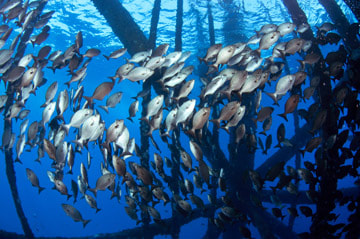|
By Julia Zeh
Edited by Ashley Koo For students attending school and living in New York City, noise pollution is an all too familiar concept. Lying awake at night as sirens blare and large vehicles rush down Broadway or Amsterdam is a phenomenon most Columbia students are used to. Many studies have shown that this human-created, or anthropogenic, noise pollution causes countless problems in humans, including cognitive impairment, increased risk of heart disease, the commonly experienced disruption of sleep, and other physiological, neurological and endocrinological problems. As the human population continues to grow and technology continues to advance, the spread of anthropogenic noise all across the globe is constantly increasing, impacting humans and lots of other animals. Very recently, the question of the effect of increased anthropogenic noise on animals other than humans has also become a topic of interest for many scientific studies. Researchers have found that animals suffer greatly from all of the noise humans are making all over the planet. In particular, this noise pollution impacts animal behavior, possibly more so than other physiological processes, and is detrimental to the ability of these animals to communicate. When anthropogenic noise is introduced to an ecosystem, the noise can mask, or block out, sounds that are vital for the animals to hear in order to survive or stay fit and remain healthy. For example, many animals require sounds to detect predators or prey, to communicate between parents and offspring, to attract mates and reproduce, and to guard their territory and compete with other animals. Noise pollution has also been found to heighten stress levels in animals. All of these impacts damage the fitness of animals. It is particularly bad when the consequences of noise pollution hurts reproduction in these animals, as this impacts future generations and the overall fitness of the species. However, studies regarding anthropogenic noise and animals have had a large taxonomic bias, meaning the studies have been focused on very few species. Recent studies have primarily focused on bird and marine mammal species. Although these species have been heavily impacted by anthropogenic noise pollution, it is important that other animals are studied as well because anthropogenic noise pollution impacts all species in a given ecosystem. In order to prevent or solve such problems, it is necessary to first identify them, and with respect to all species with the potential to be harmed. One poorly studied group in relation to anthropogenic noise pollution has been fish. Many studies have speculated about the impacts noise pollution would have on fish populations and individuals, but very few empirical studies have been conducted to provide real answers. Fish are incredibly important, as they make up more than half of all vertebrate species on earth. They are also a primary food source and thus are of economic and social importance for humans. With the increase in anthropogenic noise underwater due to things like transportation, construction, exploitation of resources, and measurement, it is likely that fish are experiencing detriments to their fitness similar to those of terrestrial vertebrates and marine mammals. For example, noise created by underwater oil rigs or large boats can mask the acoustic signals sent out by whales, dolphins, or fish. It is therefore evident that much more empirical research needs to be done in order to obtain actual evidence of the impact of anthropogenic noise pollution on fish. In order to outline conservation methods and environmental policy actions that can be taken to prevent such a valuable group of animals from being harmed, we must determine what is actually happening to the fish. Through this noise pollution research, we are realizing that toxic chemicals and garbage aren’t the only factors that harm non-human organisms and ecosystems: intangible by-products of human activity, such as noise, are harmful to animals as well.
0 Comments
Leave a Reply. |
Categories
All
Archives
April 2024
|

